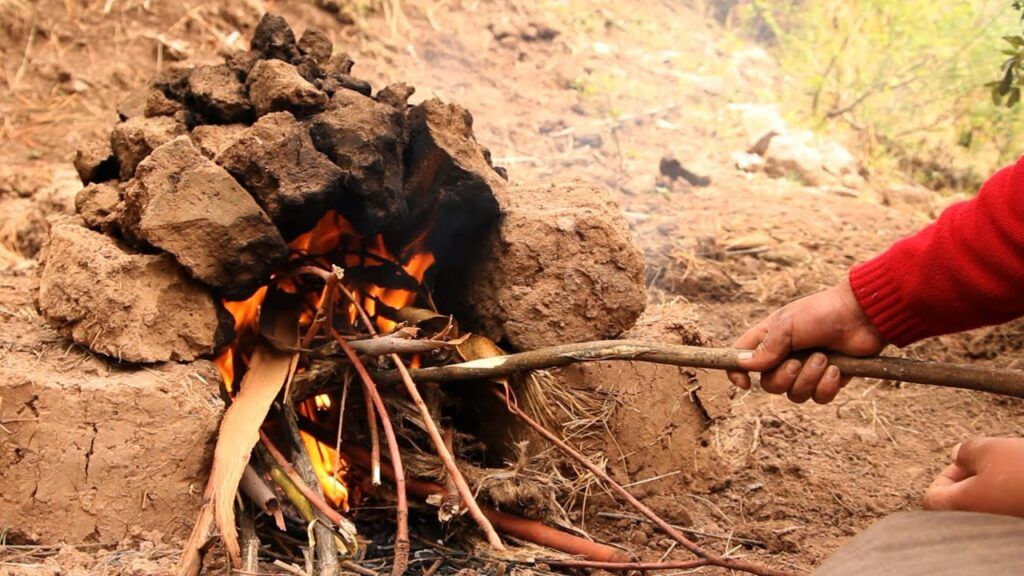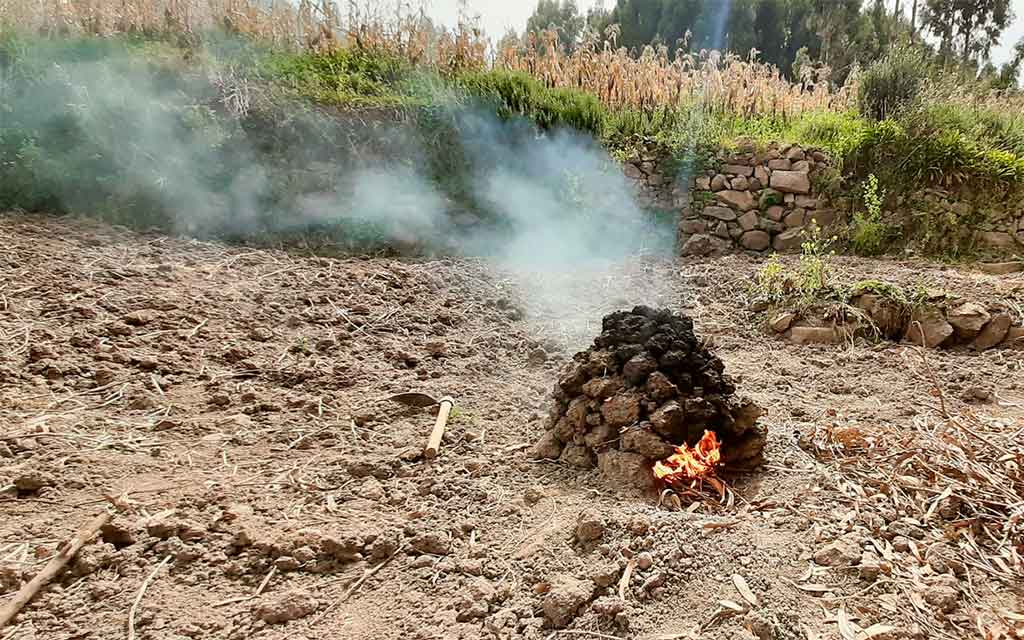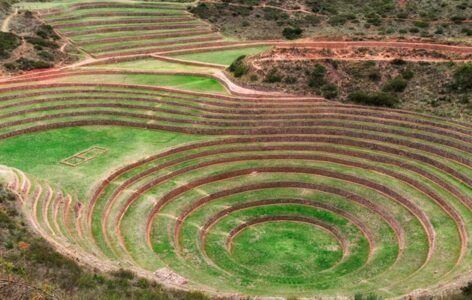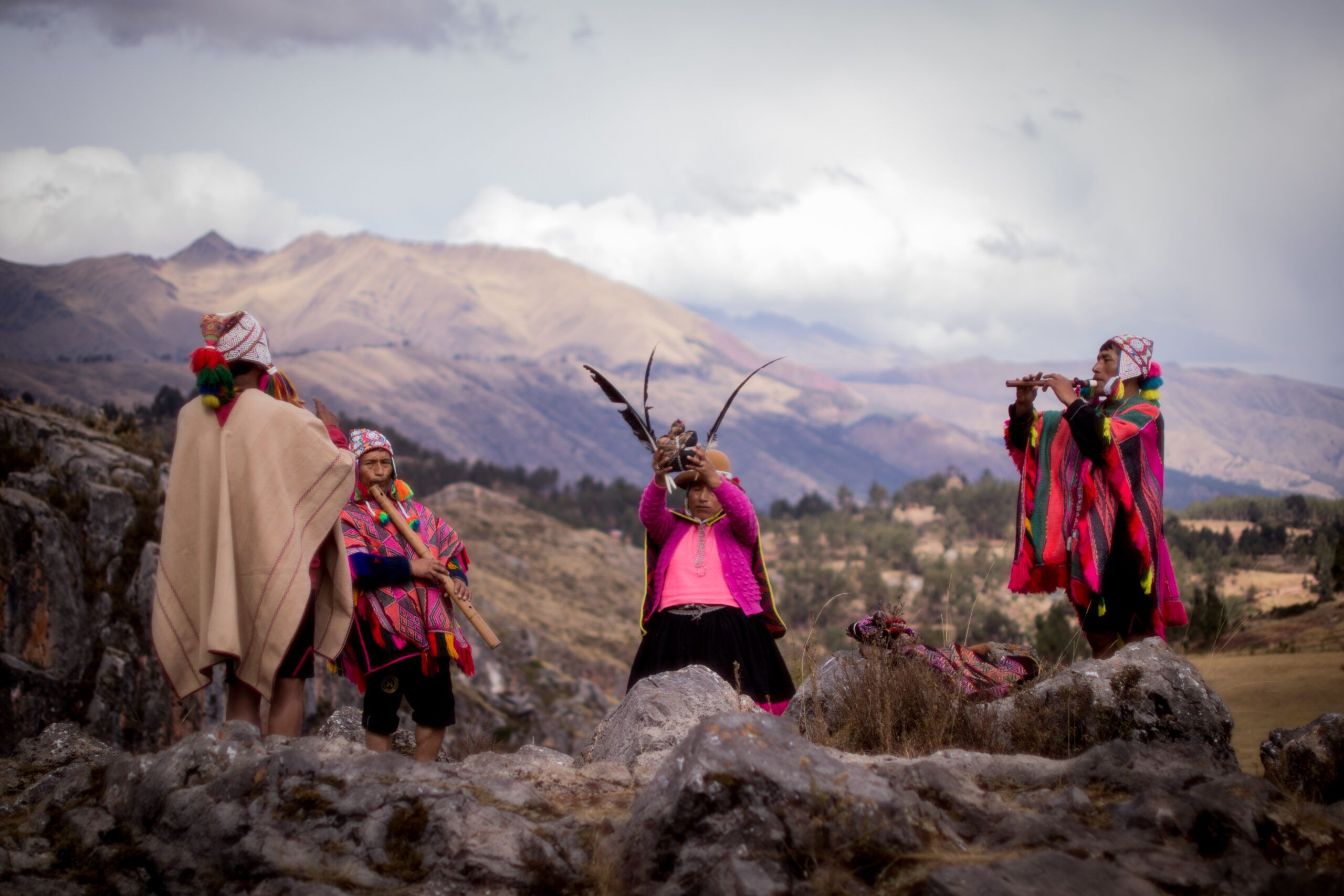Beneath the sacred peaks of the Andes, where the earth breathes with the memory of the Incas, a centuries-old culinary tradition still thrives. The huatia (pronounced wah-TEE-ah) is an underground earthen oven and more than just a way of cooking; it is a ritual, a celebration of the land, and a living connection to Peru’s ancestral past.

Hutia: A Meal Born from the Earth
Imagine a feast where the soil itself becomes the oven, where potatoes, sweet potatoes, and corn are transformed by the heat of glowing stones and the embrace of the earth. This is the magic of the huatia, a cooking method perfected by Andean farmers long before modern stoves existed.
The process is simple yet profound:
- A shallow pit is dug into clay-rich soil, shaped like a rounded bowl.
- Stones are heated in a fire until they glow red-hot.
- The ingredients—native potatoes, ocas, mashua, choclo (Andean corn), and sometimes meat—are carefully layered over the stones.
- Everything is sealed with more hot rocks and buried under a thick blanket of earth.
- Then, patience. One to two hours later, the mound is uncovered, revealing food infused with an unmistakable smoky, earthy depth.
Huatia ‘s Ritual of Harvest and Community
The huatia is not just about food—it is a celebration. Traditionally prepared after the potato harvest, it brings families and neighbors together in a shared act of gratitude to Pachamama (Mother Earth). The meal is a reward for hard work, a moment of joy before the next planting season begins.

In Andean culture, food is sacred, and the huatia embodies this belief. The earth does not merely cook the food; it blesses it. The smoky aroma, the tender texture of the potatoes, the sweetness of the corn—each bite carries the essence of the land.
From Ancient Tradition to Modern Experience
Though once a rural practice, the huatia has found new life in modern Cusco. Visitors can now witness this ancient technique at:
- Agrotourism farms in the Sacred Valley, where farmers demonstrate the process
- Cultural restaurants in Cusco that recreate the huatia for curious travelers
- Festivals, particularly during potato harvest season, where entire communities gather for massive earth-oven feasts
For those lucky enough to join a huatia meal, the experience is unforgettable. The first bite of a freshly unearthed potato, still steaming and dusted with ash, is like tasting history itself.
Huatia A Taste That Endures
In a world of fast food and electric ovens, the huatia remains a defiantly slow, beautifully primal way of cooking. It reminds us that some traditions are too precious to fade away—that the simplest methods can produce the deepest flavors.
So if you find yourself in the Andes, take part in this ancient ritual. Sit on the earth, share the meal, and taste the legacy of a people who have always known how to turn soil into sustenance.
References
- “The Lost Crops of the Incas” (National Research Council, 1989)
- “Andean Foodways: Pre-Columbian and Colonial Cuisine” (University of Cusco Press, 2016)
- “Pachamama’s Kitchen: Traditional Cooking Methods of the Andes” (Lima Culinary Institute, 2020)



